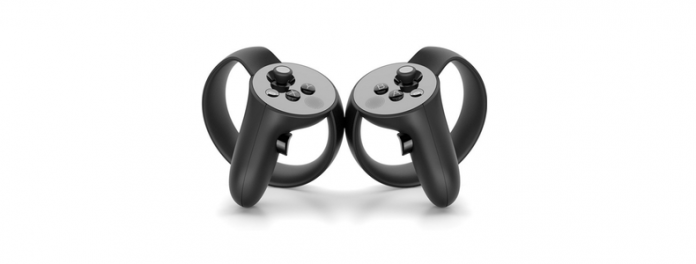Its now been almost five months since the launch of the Oculus Rift head-mounted display (HMD), and in that time its not all been plain sailing for the virtual reality (VR) device but now everything is going a lot smoother. Oculus VR has released several updates in that time the latest being a new version of the company’s PC software development kit (SDK), version 1.7.0.
Not a great deal has been added, there are more known issues than anything else, but there is one telling piece of information. The one new feature lists values for IndexTrigger, HandTrigger, and Thumbstick which likely relate to the upcoming Oculus Touch controllers, and the first known issue also refers to the Touch devices.
It’s still unknown when Oculus VR plans to launch the controllers other than Fall 2016, and no price has yet been revealed. These details will probably be announced at Oculus Connect 3 in October, so we’ll have to wait until then to find out.
The full list of update details can be seen below, and for all the latest Oculus news, keep reading VRFocus.
Oculus PC SDK 1.7.0 Changelog:
New Features
The values for IndexTrigger, HandTrigger, and Thumbstick include deadzones. Added IndexTriggerNoDeadzone, HandTriggerNoDeadzone, and ThumbstickNoDeadzone, which return values for the trigger, hand trigger, and thumbstick without deadzones.
API Changes
There are no breaking changes to version 1.7.0.
Known Issues
When Touch controllers wake up from idle, they might move erratically for up to 10 seconds before tracking is reestablished.
If you bypass the shim and communicate with the DLL directly, without specifying a version to ovr_Initialize, the DLL has no way of knowing the SDK version with which the application was built. This can result in unpredictable or erratic behavior which might cause the application to crash.
There are some USB chipsets that do not meet the USB 3.0 specification and are incompatible with the Oculus Rift sensor. If you receive a notification in Oculus Home or the Oculus App, plug the sensor into a different USB 3.0 port (blue). If none of the USB 3.0 ports work, plug the sensor into a USB 2.0 port (black).
Antivirus software, such a McAfee, can cause installation issues. To work around the issue, make sure you have the latest updates and disable real-time scanning.
If you encounter installation issues, delete the Oculus folder and install the software again.
If the Rift displays a message that instructs you to take off the headset, remove it and place it on a flat surface for 10-15 seconds.
The keyboard and mouse do not work in Oculus Home. To select an item, gaze at it and select it using the Oculus Remote or Xbox controller.
Bandwidth-intensive USB devices, such as web cams and high-end audio interfaces, might not work when using the Rift. To work around this issue, install the device on another USB host controller or a separate computer.
For dual-boot systems using DK2 or CB1 HMDs, the OS selection screen might appear on the HMD instead of the monitor. To work around this, try plugging the HMD into a different port or unplug the HMD while booting.
If you are running your application from the Unity Editor and you press the controller’s home button to return to Oculus Home, you will be prompted to close the application. If you select OK, Unity might remain in a state where it is running, but will never get focus. To work around this, restart Unity.















